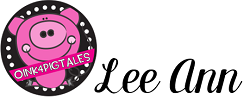Simple, quick, strategies, and tips for covering standards!
MATH SKILLS THROUGHOUT THE DAY
In math, I have students graph daily by writing simple things on the board. Have you ever...? Do you like...? I teach shapes, counting, addition, subtraction, area, and perimeter daily.When cutting out sorting sheets we discuss the shapes. I will ask, how many rectangles are there on the top row, bottom row.. etc. How many rectangles/squares do we have altogether? We have glued four of the eight rectangles/squares so how many are left? Are the shapes 2D or 3D? If we cut one of the rectangles/squares in half what two shapes will we have?Anytime we are making crafts, using journals, or other activities that require cutting and gluing, we discuss how to glue around the outside edge (perimeter) and on the inside use their glue to make an X (area).
When I taught third grade, I started on day one having students look at the clock(s) in my classroom.
Together, I'd point out the time, and teach them how to write it down at the top of their paper. As I saw they were able to tell time, I'd start having them right the start and stop times down on their paper. My students got so excited about telling time and it only took me a few seconds to do and gave them daily spiral practice and review. As the year progressed, I would start asking students how long did they think it took us to do this worksheet, which gave me a way to introduce and work daily on elapsed time, a much harder skill. As you can see, these are such simple, effective, and quick ways to cover multiple math skills throughout your day and make learning relevant, engaging, and applicable to real life for your students.
WRITING ACROSS SUBJECT AREAS
Writing can easily be used in all subjects to help students build fine motor skills, practice correctly writing letters and numbers, drawing and sharing work with peers to build confidence with speaking and grammar skills, and allow children to make connections in life that are relevant and meaningful to them. No matter what grade you teach, the writing process needs to be taught. You need to be teaching correct letter formation, beginning sentences with a capital letter, ending with an end mark, spacing between words, using graphic organizers, and how to use word walls as resources. Make writing fun and engaging by sharing your pen in shared writing activities, let students use different colored highlighters to highlight sight words, synonyms, antonyms, parts of speech, etc. In math, let students use dry erase markers to work math problems, use exit tickets for students to write/draw one opinion they learned.The main thing is to make writing fun, engaging, and meaningful for your students.
Below is an example of how I use my Read Aloud for Charlie the Caterpillar to have students writing daily and by using cross-curricular activities I am able to integrated science, vocabulary, writing, sequencing, spelling, and math making ever second of my day count.
SCIENCE and SOCIAL STUDIES
I don't know about you, but covering all the standards in science and social studies were the hardest for me to fit into my day until I learned how to use fiction books, nonfiction books, and shared research activities. For students to see and make meaningful connections in the way subjects integrate, learning must be engaging, exciting, and relevant to real-life! Real life does not come packaged in curriculum boxes. In real life,we use all subjects and skills integrated daily in our lives. When students begin to make that connection you will immediately see your students making progress!One of the best ways I have found to integrate science and social studies is by using my animal unit. I use it to teach syllables, animal classification, different habitats around the world, climates, and weather. Students learn that the different ways animals move are verbs and animal names are nouns. Kids learn how animals meet their basic needs (food, water, shelter), and how animals help us meet our basic needs. I am always doing shared research activities!
(Common Core Requirement in all primary grades) For example, when we learn about polar bears and penguins, we use maps, globes, real photos, and technology. Students will locate where each species lives, what they special adaptations they have, then compare and contrast the animals and the Arctic and Antarctic regions. Students will draw and write about what they have learned using graphic organizers, labeling activities, and create crafts and projects and I have been able to cover everything for two weeks but math using one resource.


.jpg)

